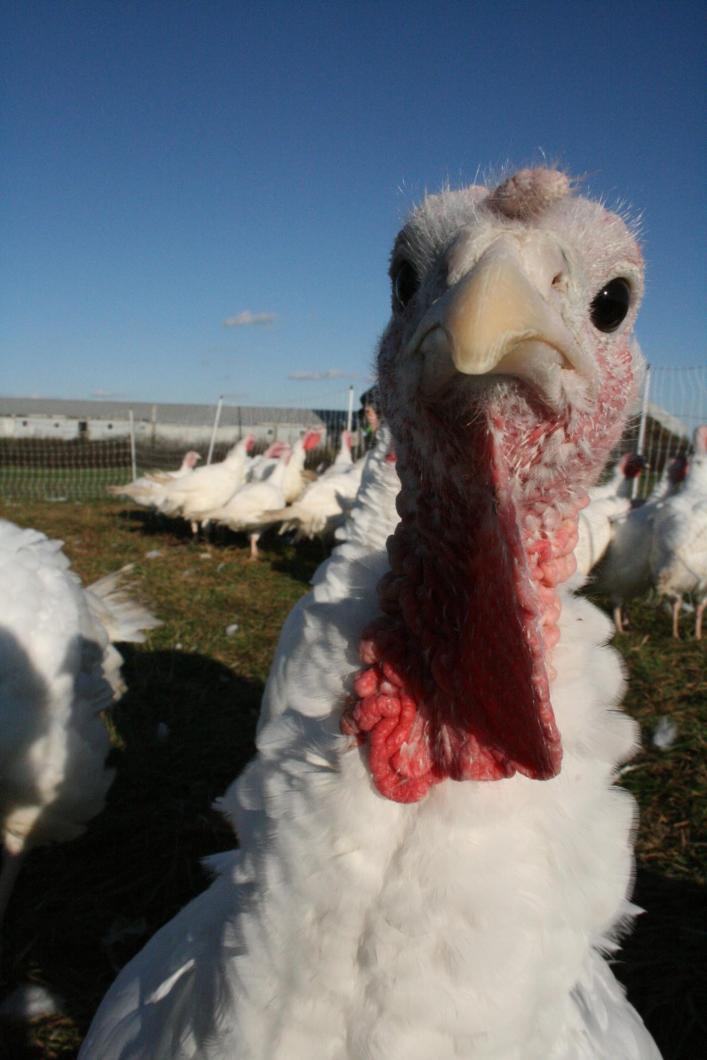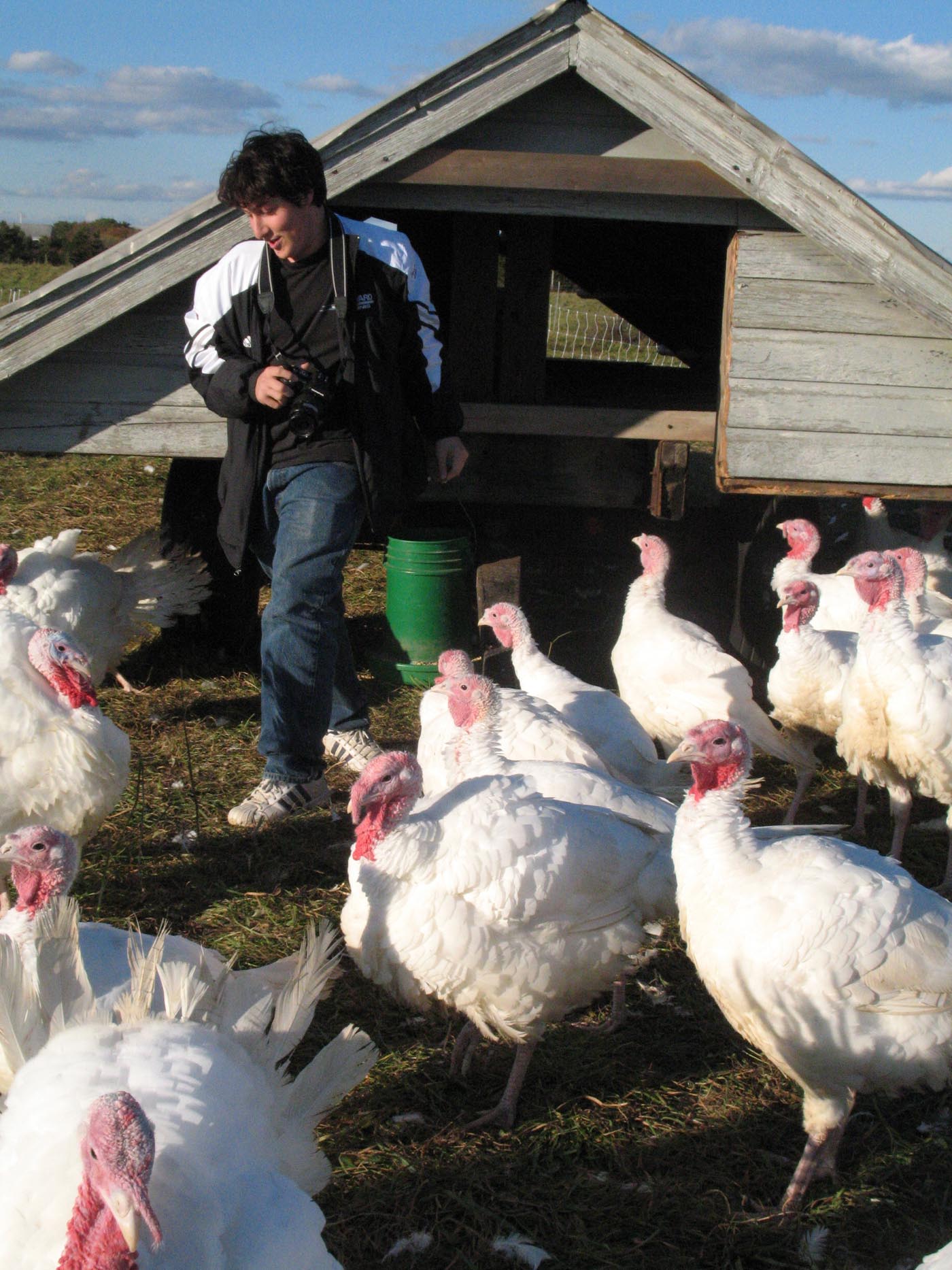There was a time, in the not so distant past, when turkeys crowded more than just the roads of Martha’s Vineyard, when the birds Islanders bought for Thanksgiving, Christmas and their weekly Sunday dinners came from right around the corner.
In the 1930s, Oscar M. Burke bought three turkeys and a dozen chickens as a hobby. With them, he started the Burke Turkey Farm on 31.4 acres of land off of the Edgartown Vineyard Haven Road. The buildings used to house them — 16 by the time the farm was in full swing — were torn down in 1972 and on the land was built Hillside Village, an elderly housing complex, but not before the farm shot the Island to 15 minutes of poultry fame.
Twenty years after its start, the farm was home to 15,000 chickens and 5,000 turkeys. Clubs in New York city special-ordered the birds at retail prices, and the wife of farm manager Joseph S. Bettencourt started selling by mail the turkeys she smoked and roasted in her own kitchen. Advertisements for the farm and its birds routinely wound up in magazines such as the New Yorker and oftentimes, business was so booming in the summer months, the family ran out of birds before the holidays.
Mr. Bettencourt bought the farm in 1952 and changed the name to Tisbury Farm. Twelve years later he sold the operation to George Schwab, who again changed the name, this time to the Vineyard Poultry Farm. Farm operations came to a halt in 1967 after Mr. Schwab accidentally shot himself while climbing over a fence to protect his birds. “That was just before Thanksgiving time,” Island farmer Elisha Smith told oral historian Linsey Lee in 1997. “So everybody around went up and helped his widow there get the turkeys all dressed off and ready to ship and whatever had to be done with them. We spent a lot of time helping her out. That was the end of the turkey farm then.”
Since the farm shut down, Islanders have, for the most part, been importing their Thanksgiving turkeys. Save for the few who raise and kill their own, most head to the grocery store to buy their Butterballs or to Morning Glory Farm to special-order an organic bird weeks before the holidays.
Two years ago, the FARM Institute in Katama brought back the local turkey. In 2005, the farm, a learning farm that teaches kids and adults in the community about farming through hands-on experience, added turkeys to their roster of poultry, which included ducks, geese and laying hens. “It was just another type of poultry we could raise with our students,” said Matthew Goldfarb, executive director of the farm. “The more diversity you have when the kids are here, the more they can see the niche each animal has on the farm and in the food system.”
This year the poults, four different breeds including three heritage varieties as well as Broad-breasted Whites, arrived on the farm in spring. From day one, student participants in farm programs, whether they be wee farmers or teenage farmers-in-training, helped raise them. The heritage birds are completely free range, Mr. Goldfarb said, while the farmhands and kids use an old trailer bed to rotate the Broad-breasted Whites.
“At each stage, the kids are involved,” said Melinda DeFeo, the farm education program manager. “They can touch all their bumps and see firsthand the differences between the breeds,” she said. “The light bulbs start to go on. These ‘ah-ha’ moments really start to happen when they can get their hands on them.”
In late October, students enrolled in fall programs helped bring the turkeys inside. Although no students participated in the slaughtering, kids have, in the past and with parental permission, helped process farm chickens. “Kids know they’re going to eat turkey for Thanksgiving. It gives them a sense of where their food comes from,” Mr. Goldfarb said.
The farm has been busy this fall taking orders for the 60 turkeys raised and slaughtered right on the property. The birds range in size from 10 to 30 pounds and are selling for $4.50 per pound. As of press time, only eight birds had not yet been spoken for.
The heritage breeds have more dark meat than the Broad-breasted Whites and the breast is not as large, explained Mr. Goldfarb. “But as far as consumption goes, it’s all delicious,” he said. He plans to bring one of each to his family Thanksgiving dinner. “It’s a good education tool for the rest of my family,” he said. “It starts a good discussion.”








Comments
Comment policy »